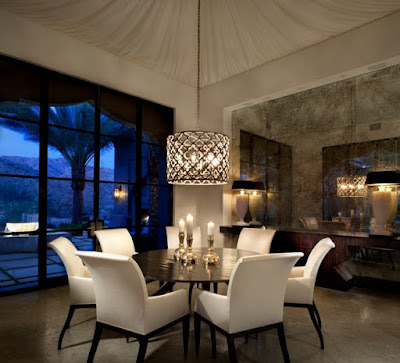Should you get warm or cool bulbs? To find out, answer these 5 simple questions about how you live and work at home
Buying LED lightbulbs can seem like a daunting task when you are confronted with so many options. Whether you need cool, warm or neutral temperature LEDs depends on how and when you use your home, as well as your home’s interior style and materials.
Answering the five questions below will make choosing your next LED bulbs easier. But first, you’ll want to know the answer to this one: What is color temperature? We’ll explain.
What Is Color Temperature?
Color temperature, a fancy term for how warm (amber) or cool (blue) a light is, is easiest to explain in terms of how sunlight works.
The sun changes color, measured in degrees Kelvin, over the course of the day. Midday readings might be 6000K, or very blue-ish white, while temperatures dip below 3000K near sunset with a very “warm” amber light.
Generally, warm light is anything 3000K or lower, while cool light is 4000K or above. 3500K, a middle ground often called neutral, can look either cool or warm depending on furnishings and other nearby lights.
1. When are you at home the most? If you are at home mostly in the evenings, then warmer color temperatures, such as 2700K LED bulbs, are likely the best option. They are more relaxing, less likely to disrupt your sleep patterns and will provide a similar glow to traditional 60 watt incandescent bulbs.
2. When do you use your lighting the most? 5000K LED daylight bulbs might be a good idea in an office that you use primarily during the daytime, but if you have enough daylight coming in from your windows, consider warmer-temperature bulbs instead that will be more comfortable at night.
3. What are the colors of your walls, floor, ceiling and furnishings? If your home is full of cool colors like black, blue, green or crisp whites, a cool color temperature such as 3000K or even 3500K LED bulbs might be the best bet to complement your decor.
But if you have a lot of natural materials like hardwood floors or cabinets, woven rugs and upholstery in browns, tans, reds or oranges, warmer whites like 2700K LED bulbs will likely enhance your home.
4. What is the style of your home? Traditional and transitional homes typically look best under 2700K LED warm white, because they produce a glow that is closer to candlelight, firelight and gas light once used in classic houses.
Some modern homes, especially those with crisp white finishes, might look better with bulbs closer to the cooler side of the temperature scale. But keep in mind that, even in modern homes, you’ll need light that helps you relax at night, so warmer temperature bulbs might still be the best choice for the bedroom.
5. Do you dim? The classic incandescent bulb was easy to dim and create a warmer amber hue when you did. The first LEDs to hit the market did not dim, which was one reason some people didn’t like them. Manufacturers now make “warm dim” LEDs that go as low as 1600K when dimmed, giving off a more traditional incandescent glow.
The Best of Both Worlds
Ideally, our light would change over the course of the day, just like the sun does. We can re-create that pattern with some new LED light fixtures called “tunable white.” These new products allow us to have daylight-cool white in the middle of the day that matches natural light, giving us the most energetic and active atmosphere when we need it. As the sun sets, tunable white bulbs shift warmer toward traditional incandescent, making it easier for us to relax and sleep.



















